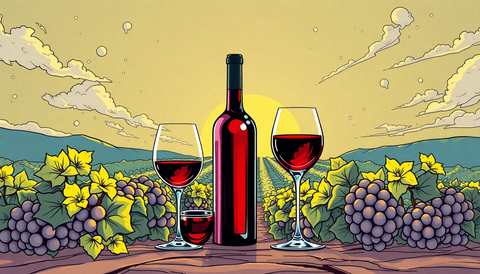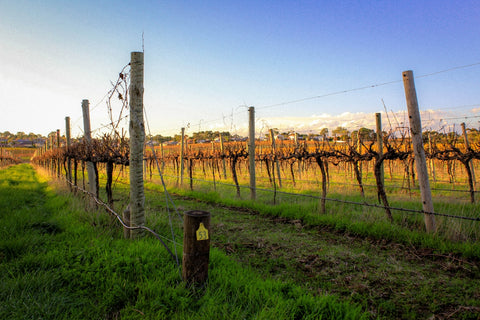The Enduring Allure and Cultural Significance of Wine
In 2025, the world of wine continues to captivate and enchant, standing as a testament to millennia of human history, agricultural evolution, and artistic expression. Far more than a mere beverage, wine is deeply woven into the fabric of global cultures, serving as a centerpiece for celebrations, a catalyst for intimate conversations, and a profound reflection of the land from which it originates. Its journey, from the humble grape nurtured in a vineyard to the complex, aromatic elixir poured into a glass, is a narrative of passion, precision, and the intricate dance between nature and human endeavor. For both the neophyte embarking on their initial oenological explorations and the seasoned connoisseur perpetually seeking novel experiences, a deeper understanding of wine offers an expansive gateway to richer sensory pleasures and a more profound appreciation of its multifaceted world.
Unveiling the Essence: The Primacy of Grape Varietals in Winemaking
At the very heart of any wine's identity lies the grape varietal. The vast and diverse spectrum of wine styles, encompassing an incredible range of flavors, aromas, and textural profiles, can be meticulously traced back to the specific grapes employed in its creation. Each varietal, when cultivated under unique environmental conditions and subjected to distinct vinification techniques, culminates in a singular and inimitable output. Mastering the intrinsic characteristics and potential nuances of key grape varietals is not merely a step, but rather the foundational cornerstone in unlocking the multifaceted secrets and enduring mysteries of wine.
A Symphony of Red Wines: Exploring Depth and Character
- Shiraz (Syrah): Globally revered, Shiraz is synonymous with wines of opulent richness and profound body. In sun-drenched viticultural zones, such as the celebrated McLaren Vale region in South Australia, this varietal flourishes, developing intensely concentrated flavors of sun-ripened blackberry, luscious plum, and a signature, lingering peppery spice. Nuances of smoky bacon, decadent dark chocolate, and the intriguing complexity of licorice can also gracefully emerge, contributing to a wine of remarkable depth, power, and aging potential.
- Cabernet Sauvignon: This noble and widely planted grape varietal forms the structural backbone of countless prestigious red wines across the globe. Renowned for its formidable structure, assertive tannins, and exceptional capacity for cellaring, Cabernet Sauvignon typically presents a complex bouquet of blackcurrant, cedarwood, and tobacco leaf, often complemented by subtle hints of mint or eucalyptus, particularly when cultivated in esteemed regions like Bordeaux, France, or Napa Valley, California.
- Merlot: Often perceived as a more immediately accessible and velvety counterpart to Cabernet Sauvignon, Merlot provides a luxuriously plush texture and an undeniably appealing fruit-forward character. Anticipate encountering delightful flavors of ripe plum, succulent cherry, vibrant raspberry, and frequently, a smooth, comforting nuance of chocolate or mocha. Its inherent versatility makes it an exceptional companion to an extensive variety of culinary dishes.
- Grenache (Garnacha): Thriving with vigor in warm, Mediterranean climates, Grenache plays a pivotal role in numerous popular and critically acclaimed blends, most notably those originating from the Rhône Valley in France and the Iberian Peninsula of Spain. It imparts vibrant and generous red fruit flavors, including strawberry, raspberry, and cherry, which are frequently harmonized by warming spice notes such as cinnamon and a delicate white pepper. It is a varietal that consistently offers both approachability and layered complexity.
- Pinot Noir: Revered with almost religious fervor by enthusiasts for its ethereal elegance and intricate complexity, Pinot Noir is a notoriously demanding yet supremely rewarding grape. It achieves its zenith in cooler climatic conditions and produces wines characterized by delicate red fruit aromas (think cherry, raspberry, cranberry), often intertwined with captivating earthy undertones of mushroom, damp forest floor, and sometimes subtle floral hints like violet. Its inherent transparency allows the unique signature of its terroir to be expressed with remarkable purity.
A Spectrum of White Wines: Crispness, Richness, and Aromatic Intrigue
- Chardonnay: Arguably the most globally recognized and versatile white grape, Chardonnay is a true chameleon, readily adapting its inherent character to the prevailing climate and the specific winemaking interventions employed. In cooler viticultural zones, it tends to manifest as lean, bracingly crisp, and mineral-driven, showcasing notes of green apple and bright citrus. In warmer locales, or when judiciously treated with oak during maturation, it blossoms into richer, more opulent expressions featuring tropical fruit nuances, creamy vanilla, hints of butter, and toasted brioche characteristics.
- Sauvignon Blanc: This highly aromatic white grape varietal is celebrated for its vibrant, palate-cleansing acidity and its distinct, often pungent, flavor profile. Common tasting notes include zesty grapefruit, exotic passionfruit, tangy gooseberry, and a characteristic herbaceous or grassy quality, frequently described with the evocative term 'green'. It is consistently a refreshing and vivacious wine, ideally suited as an aperitif or paired with lighter, more delicate cuisine.
- Pinot Grigio (Pinot Gris): When meticulously crafted in the refreshing Italian style (Pinot Grigio), this varietal typically delivers a light-bodied, exceptionally crisp, and predominantly dry drinking experience. It highlights flavors of crisp green apple, ripe pear, bright lemon zest, and sometimes a subtle, stony minerality. The French interpretation, known as Pinot Gris, often presents a richer, more full-bodied, and complex wine, with discernible notes of honey and succulent stone fruit.
The Profound Influence of Terroir: The Soul of the Wine
The intricate environmental conditions under which grapes are cultivated – collectively known as terroir – are as fundamental to a wine's ultimate identity and character as the grape varietal itself. This complex and multifaceted interplay of natural elements encompasses the soil's geological composition and drainage, the prevailing climate (including sunlight intensity, annual rainfall patterns, and diurnal temperature variations), the vineyard's topography (such as slope aspect and elevation), and even the influence of surrounding flora and fauna. Iconic wine regions globally, including but not limited to Bordeaux and Burgundy in France, Tuscany in Italy, and the Mosel Valley in Germany, owe their unique and enduring global prestige to their distinctive and irreplaceable terroirs. In Australia, viticultural powerhouses like the McLaren Vale are globally recognized for their remarkable capacity to produce world-class wines that authentically and beautifully express the essence of their specific origins. While universally lauded for its exceptional Shiraz, McLaren Vale also consistently yields outstanding examples of Grenache and Cabernet Sauvignon, vividly demonstrating the region's extraordinary viticultural diversity and its potential across multiple varietals.
A Strategic Approach to Buying Wine: Navigating the Marketplace
The decision to buy wine marks the exciting commencement of a personal journey of sensory exploration and discovery. To navigate the vast and often overwhelming marketplace with confidence and make truly informed choices, it is essential to consider your individual palate preferences and the specific context or occasion for which the wine is intended. Are you actively seeking a robust, full-bodied red wine to harmonize perfectly with a rich, hearty meal, or perhaps a light, crisp white wine to provide a refreshing counterpoint on a warm, sunny afternoon? If your objective is to buy wine with assurance and achieve consistently satisfying results, actively exploring bottles from regions and producers with established reputations for quality is an eminently sensible and rewarding strategy. For instance, specifically seeking out a bottle of Shiraz from the renowned McLaren Vale appellation promises a certain benchmark of quality, intensity, and impeccable balance, characteristics for which the region is justly famous. Similarly, delving into the structured elegance typically found in a well-crafted Cabernet Sauvignon, embracing the fruit-forward charm of a smooth Merlot, or experiencing the spicy warmth inherent in a quality Grenache can lead to delightful and memorable discoveries. For enthusiasts of white wines, the zesty, citrus-driven brightness of a Sauvignon Blanc, the adaptable and nuanced character of a well-made Chardonnay, or the clean, crisp, and refreshing profile of a classic Pinot Grigio are consistently excellent and reliable choices.
Elevating the Wine Experience: Art, Science, and Enjoyment
The process of fully appreciating wine extends significantly beyond the mere selection and purchase of a bottle; how the wine is ultimately served and experienced can profoundly influence its perceived quality and your overall enjoyment. Attention to several key details can elevate your wine drinking from ordinary to extraordinary:
- Optimal Serving Temperature: Different wine styles and varietals possess unique characteristics that are best revealed at specific serving temperatures. Serving whites generally cooler than reds allows their delicate aromas and vibrant flavors to be fully expressed without overwhelming the palate.
- Appropriate Glassware: The subtle design and shape of a wine glass are not merely aesthetic; they play a crucial role in concentrating aromas towards the nose and influencing how the wine interacts with the taste receptors on your palate, thereby enhancing the overall sensory experience.
- The Art of Decanting: For older, more mature red wines that may have developed sediment, or for young, powerfully tannic wines, the practice of decanting can be transformative. It allows the wine to aerate, softening harsh tannins and enabling its complex bouquet of aromas to unfurl and become more accessible.
- Meticulous Storage Practices: Proper long-term storage, typically in a cool, dark environment characterized by consistent temperature and humidity levels, is absolutely critical for preserving the integrity and quality of wine, particularly for those bottles intended for extended aging and future enjoyment.
Conclusion: Embarking on a Lifelong Journey of Wine Discovery
The universe of wine represents an endlessly fascinating and rewarding landscape, offering a lifetime of continuous learning, sensory exploration, and profound personal enjoyment. Each meticulously crafted bottle possesses a unique story to tell – a narrative imbued with the essence of the sun, the richness of the soil, the life force of the vine, and the skilled artistry of the winemaker. Whether your preferences lean towards the bold, captivating power of a world-class Shiraz hailing from the esteemed McLaren Vale, the refined and intricate subtlety often found in a delicate Pinot Noir, the invigorating, palate-cleansing refreshment of a vibrant Sauvignon Blanc, or the versatile and universally appealing character of a classic Chardonnay or smooth Merlot, rest assured that a wine perfectly suited to your individual taste and the specific occasion awaits discovery. We wholeheartedly encourage you to embrace the spirit of exploration, experiment with diverse varietals and regions, and most importantly, to savor every single sip. The ongoing quest to buy wine and unearth new favorites is not merely a pursuit of pleasure; it is a richly rewarding journey that profoundly enhances the senses and cultivates a deeper, more meaningful connection to the world's diverse cultures and natural bounty.




Comments (0)
There are no comments for this article. Be the first one to leave a message!